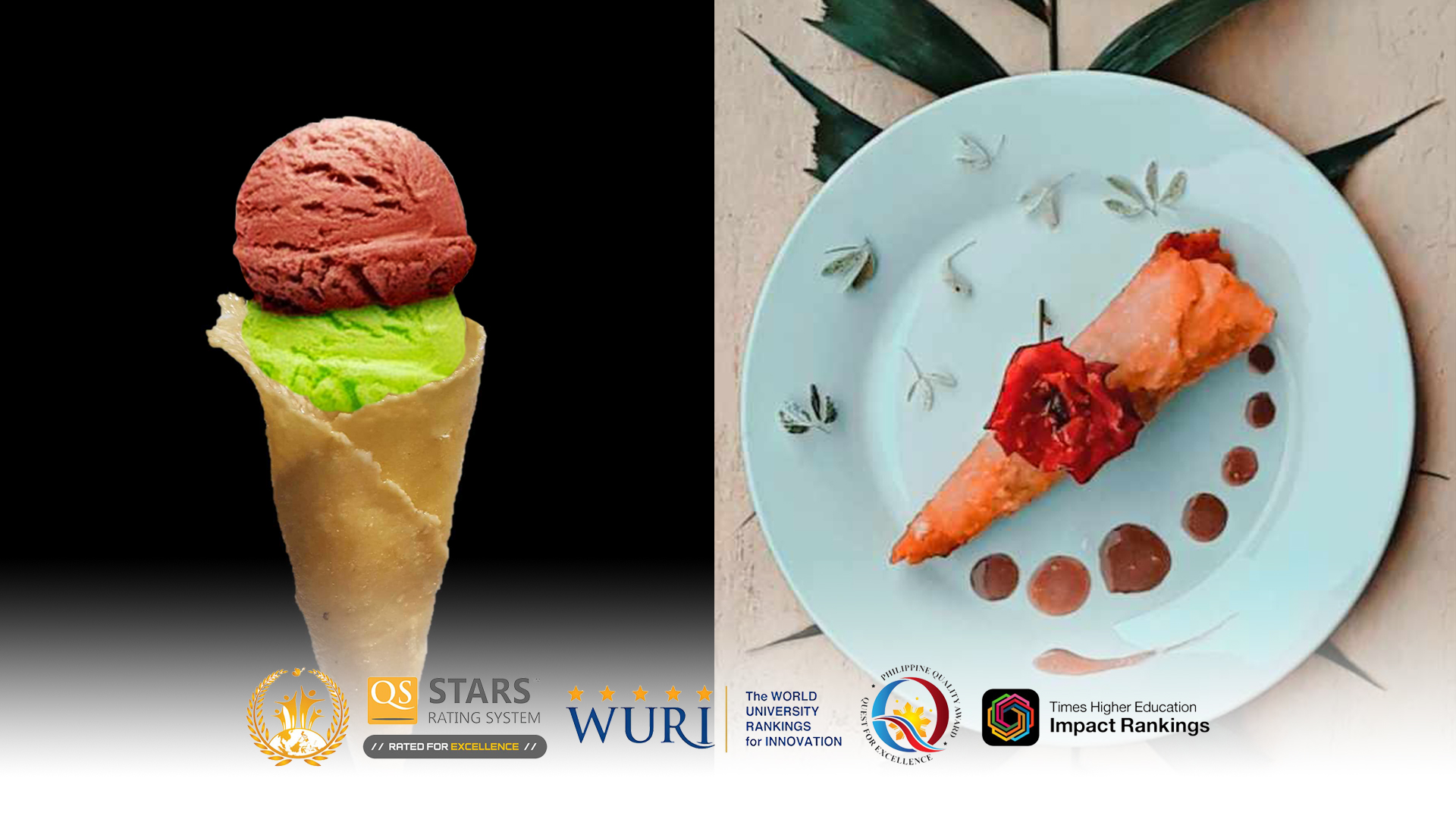Whose childhood wasn't brightened by the joy of ice cream, and who hasn't turned to it for solace in adulthood? Everyone will plea not guilty.
While it is difficult to juggle life and make a living, having that sweet lick of ice cream and crunch of the cone's tip can make it feel all is well. But what if—the cone gets a vegetarian twist?
Driven by innovation and fueled by a master's curiosity, Dr. Alexander Rex Sañosa and Mrs. Claire Frances Barahan, faculty members at Biliran Province State University's School of Management and Entrepreneurship (BiPSU-SME), have developed a healthier alternative cone — the taro ice cream cone.
Inspired by his discovery at the Bohol Bee Farm, where he encountered unique cassava-based ice cream cones, Dr. Sañosa sought to create a similar innovation using another tuber that thrives abundantly in Biliran province.
According to the Philippine Statistics Authority (PSA)'s report on the volume of production for taro or gabi at that time, Eastern Visayas emerged as the country's top producer, yielding an impressive 21,946 metric tons. Motivated by this data, Dr. Sañosa had set out to develop IPs that could capitalize on this local resource and support local farmers, which led to the development of the composition and production process of taro ice cream cones.
Taro, nestled among lush rice paddies and expansive cornfields, holds a significant place in every Filipino household's kitchen. Unlike its fellow tubers, it has a remarkable ability to endure the test of time and can retain its quality and flavor, making it an invaluable asset in food processing. As the world spins on, the resilience of taro continues to sustain, proving that even the most unassuming crops can hold extraordinary potential.
Today's ice cream cones, whether wafer or waffle, have become a staple in the realm of ice cream consumption. Both types are traditionally baked, a process celebrated for its contribution to food processing worldwide. Yet, there remains a pressing need for a more cost-effective alternative, and the industry is ripe for innovation that can redefine the way we create these beloved cones.
Frying process is interesting. On a note, baking demands a significant amount of heat energy, while frying does not. Consequently, this high energy consumption translates into increased costs.
Thus, this #TatakBiPSUnista innovation, not only launches a new and atypical cone product but likewise introduces a cost-efficient method for producing ice cream cones using the frying process.
From the fields to the freezer, discover the transformation of taro into a delectable dessert. This begins with peeling and thoroughly washing the taro roots. The roots are then grated and the juice is squeezed out before being flattened into sheets. These sheets are briefly dipped in boiling water for at least 5 seconds, sun-dried for 2 to 3 hours, and then molded into cone shapes. Once air-dried for an hour, the cones are deep-fried and left to drain excess oil. The result is a sensational taro ice cream cone, ready to complement the flavor of ice cream you love the most.
Picture this: as you savor the creamy delight of your favorite ice cream, you suddenly bite into a cone that's more than just an ice cream holder—it's a special culinary experience in itself.
Now, why buy-in to this innovation? Let's draw a delicious parallel between the age-old traditional ice cream cones and the groundbreaking taro ice cream cones.
In terms of production, traditional ice cream cones require 15-18 minutes of baking and yield six to eight cones per batch. In contrast, taro cones need just 7-8 minutes of frying and produce seven to nine cones per batch. When it comes to storing, traditional cones become soggy after 10 minutes when exposed to air, while taro cones can retain their integrity for a remarkable 6 hours. Traditional cones can be conveniently stacked by nesting them into one another, whereas taro cones are stacked individually. Functionality-wise, traditional cones hold four to five regular-sized scoops of ice cream and can keep them for up to 3 minutes. Taro cones, on the other hand, hold two to three scoops and offer the same 3-minute window. Lastly, traditional cones cost around 10 pesos each, while taro cones are a more economical choice at 8 pesos.
Doesn't the taro cone hold the promise of better delights? Indeed, it does. Hence, it’s no surprise that it gained regional attention.
In August that year, after its successful invention, the said IPs brought BiPSU to its first exposure at the Department of Science and Technology (DOST) Regional Invention Conference and Exhibit (DOST-RICE) at Tacloban City, being one of the intellectual property qualifiers in the region. A historic moment for the institution.
Five years later, it remains relevant as the first taro innovation and only ice cream cone vamped up in the university, protected under registered utility models with the IPOPHL. Moreover, it has been staging SME’s extension service activities and Barangay Kauswagan projects, transforming communities and improving lives through sustainable development programs.
In the recent, the taro ice cream cone innovation secured top honors in the Intellectual Property Fashion Show, besting competitors from other schools, at the university’s Research, Innovation and Extension Services (RIES) Expo held on August 29 at the Student Center during the institution’s founding anniversary celebrations.
Like a fine relish, this invention ripens with time, but beneath its gentle sweetness, a bitter undertone persists – the harsh reality that groundbreaking ideas often meet resistance, leaving mass absorption a distant flavor.
Many take a bite, but only a few digest. However, tasting isn't eating; embracing innovation takes courage. On that ground, let us proudly champion innovations, welcoming and supporting cutting-edge ideas, just as true BiPSUnistas are known for their bold spirit and unwavering commitment.
#WoWBiPSU
[The article aligns with Sustainable Development Goals No: 2 (Zero Hunger), 8 (Decent Work and Economic Growth), 12 (Responsible Consumption and Production), and 17 (Partnerships for the Goals).]
-
 0
0
-
 2
2
-
 0
0
-
 0
0
-
 0
0
-
 0
0

